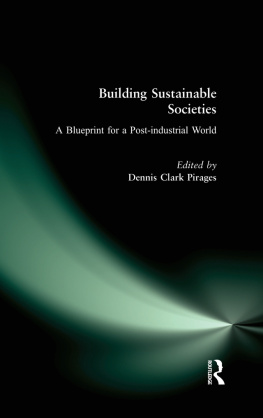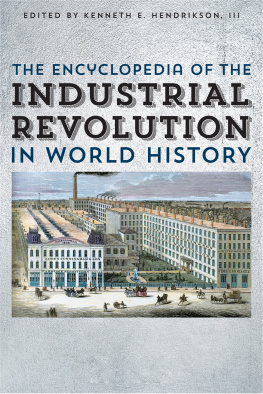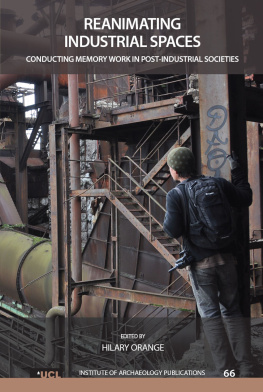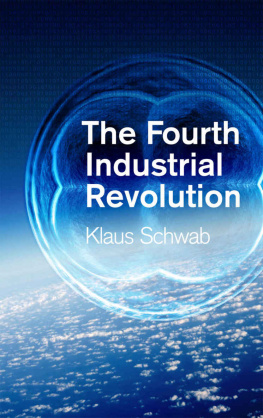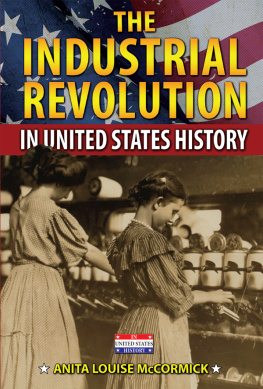The Industrial Turn in World History
In The Industrial Turn in World History, Peter N. Stearns presents a concise yet far-reaching overview of the worldwide shift from agricultural societies to industrial societies over the past two centuries. Putting the implications for individuals and societies in global context while simultaneously considering the limits of generalization across cultures, Stearnss text explores the nature of industrialization across national and regional lines. Rather than portraying the Industrial Revolution as primarily a Western, early-19th-century development, this new narrative argues that the move to industrial societies is an ongoing and truly global shift. Taking a largely social and cultural approach, Stearns engages with the leading-edge approach of looking at emotion historicallyallowing readers to ask questions about the impact of industrial society on emotional experience and happiness levels. This innovative framing allows for use in a variety of courses, including world history, economic history, and more general courses on the Industrial Revolution.
Peter N. Stearns is University Professor of History at George Mason University. He is the author of Globalization in World History (2nd edition, 2015), Childhood in World History (3rd edition, 2015), Gender in World History (3rd edition, 2015), Peace in World History (2014), and Human Rights in World History (2012), all in this series. Other books include A History of Shame (forthcoming), Guiding the American University: Challenges and Choices (2015), and Satisfaction Not Guaranteed: Dilemmas of Progress in Modern Society (2012).
Themes in World History
Series editor: Peter N. Stearns
For a full list of titles in this series, please visit www.routledge.com
The Themes in World History series offers focused treatment of a range of human experiences and institutions in the world history context. The purpose is to provide serious, if brief, discussions of important topics as additions to textbook coverage and document collections. The treatments will allow students to probe particular facets of the human story in greater depth than textbook coverage allows and to gain a fuller sense of historians analytical methods and debates in the process. Each topic is handled over timeallowing discussions of changes and continuities. Each topic is assessed in terms of a range of different societies and religionsallowing comparisons of relevant similarities and differences. Each book in the series helps readers deal with world history in action, evaluating global contexts as they work through some of the key components of human society and human life.
Human Rights in World History
Peter N. Stearns
Peace in World History
Peter N. Stearns
The Atlantic Slave Trade in World History
Jeremy Black
Aging in World History
David G. Troyansky
The Industrial Turn in World History
Peter N. Stearns
The Industrial Turn in World History
Peter N. Stearns

First published 2017
by Routledge
711 Third Avenue, New York, NY 10017
and by Routledge
2 Park Square, Milton Park, Abingdon, Oxon, OX14 4RN
Routledge is an imprint of the Taylor & Francis Group, an informa business
2017 Taylor & Francis
The right of Peter N. Stearns to be identified as author of this work has been asserted by him in accordance with sections 77 and 78 of the Copyright, Designs and Patents Act 1988.
All rights reserved. No part of this book may be reprinted or reproduced or utilised in any form or by any electronic, mechanical, or other means, now known or hereafter invented, including photocopying and recording, or in any information storage or retrieval system, without permission in writing from the publishers.
Trademark notice: Product or corporate names may be trademarks or registered trademarks, and are used only for identification and explanation without intent to infringe.
Library of Congress Cataloging-in-Publication Data
Names: Stearns, Peter N., author.
Title: The industrial turn in world history / Peter N. Stearns.
Description: New York, NY : Routledge, [2016] | Series: Themes
in world history
Identifiers: LCCN 2016011111 | ISBN 9781138672857 (hard) |
ISBN 9781138672864 (pbk.) | ISBN 9781315562308 (e-book)
Subjects: LCSH: Industrial revolution. | IndustrializationHistory. |
Economic history.
Classification: LCC HD2321 .S7433 2016 | DDC 306.3/4dc23
LC record available at https://lccn.loc.gov/2016011111
ISBN: 978-1-138-67285-7 (hbk)
ISBN: 978-1-138-67286-4 (pbk)
ISBN: 978-1-315-56230-8 (ebk)
Typeset in Bembo
by Apex CoVantage, LLC
Contents
Preface
Why Do We Need Another Look at Industrial Society?
This book focuses on the nature of industrial society, particularly as it contrasted with longstanding characteristics of the agricultural civilizations that had preceded it. The target is the past two centuries, as the implications of industrial society have become clearerthough there remain some vital uncertaintiesand as they have become increasingly global.
The book centers on one basic question: once a society industrializes, or seriously prepares to industrialize, what other changes have to occur? The question must be applied to a wide range of topics, from the nature of childhood to the conduct of war and peace, for industrialization challenges established habits in many domains.
Agricultural and Industrial Revolutions
Two big transformations have defined the human experience since the inception of the species. The first was the replacement of hunting-and-gathering economies with agriculture. The second was the more recent supplanting of agriculture with urban, industrial structures.
Of course there have been a host of other important developments in world history: substantial waves of migration, including the travels that took the species to almost all the habitable world well before the rise of agriculture; the advent of the major religions and more recently the development of modern science; accelerations and expansions of trade; the rise and fall and sometimes recovery of significant regional powersand the list could easily be extended. But there are only the two developments that have really redefined much of the framework for human life.
Dealing with the rise of agriculture and the innovations and dislocations it would cause is obviously complicated by a lack of elaborate data. We have no direct record of why early agriculturalists innovated or what tensions they encountered in the process. We can guess a bit, but the process is impossible to decipher in detail. Change is also complicated by the wide variations in dates for the advent of agriculture: the Black Sea region began to make the turn 11,000 years ago, but southeast Asia, with rice, shifted only 9,000 years ago and the Americas, beginning with corn in Central America, only 7,000. And agriculture fanned out from these initial centers very graduallyreaching parts of Europe, for example, only 4,000 years ago or later. Additionally, a few regions held on to hunting and gathering or developed a nomadic alternative that continues into the present day.



